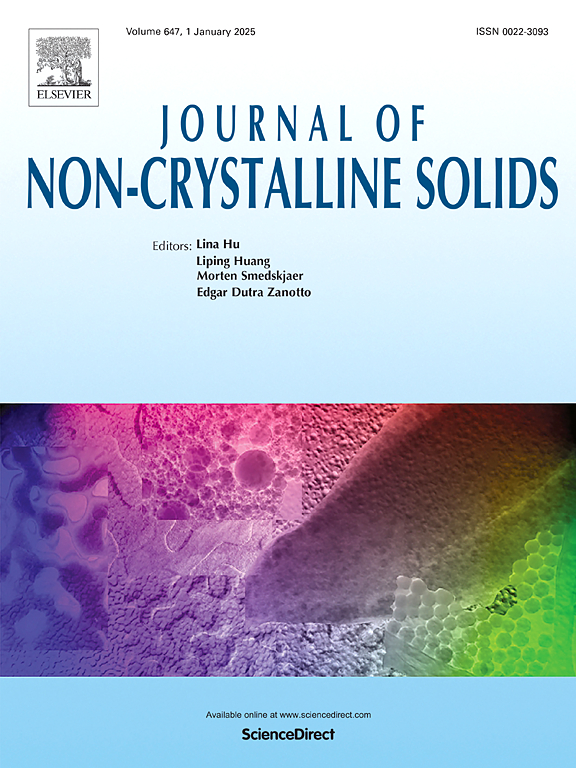冷却工艺对高纯石英玻璃中气泡的影响
IF 3.5
3区 材料科学
Q1 MATERIALS SCIENCE, CERAMICS
引用次数: 0
摘要
研究了电熔高纯石英玻璃冷却过程中气泡的演变。实验证明,冷却速率调节着石英玻璃中气泡的数量和大小。采用适当的冷却速率可以有效地减少石英玻璃中气泡的数量和减小气泡尺寸,提出气泡产生的原因是SiO气体和CO气体溶解到玻璃基片中。随着温度的降低,气体在玻璃中的溶解度增加,而缓慢的冷却过程使气泡中的气体有更充分的时间溶解。气体在气泡中的溶解进一步减小了气泡的大小,宏观上,玻璃可见尺寸范围内的气泡数量减少。此外,两段冷却工艺可以进一步减小石英玻璃中的气泡体积,在较高温度范围内快速冷却以减少气泡的产生,在较低温度范围内缓慢冷却以促进气泡的溶解。本文对冷却过程中气泡演化的研究对制备高纯石英玻璃具有重要的意义和价值。本文章由计算机程序翻译,如有差异,请以英文原文为准。
The influence of cooling process on gas bubbles in high-purity quartz glass
This paper investigates the gas bubble evolution in the cooling process of the fabrication of electrically melted high-purity quartz glass. The experiment proves that the cooling rate regulates the quantity and size of gas bubbles in quartz glass. Using an appropriate cooling rate can effectively reduce the number of gas bubbles and decrease the gas bubble size in quartz glass, which is proposed to stem from the dissolution of SiO gas and CO gas into glass substrate. As the temperature decreases, the solubility of the gas in the glass increases, while the slow cooling process allows the gas in the gas bubbles have more sufficient time to dissolve. The dissolution of gas in the gas bubbles further reduces the size of gas bubbles and macroscopically, the number of gas bubbles within the visible size range of glass decreases. In addition, a two-stage cooling process was demonstrated to be able to further reduce the gas bubble volume in quartz glass, which is combined with a rapid cooling in the higher temperature range to reduce the generation of gas bubbles and a slow cooling in the lower temperature range to promote the dissolution of gas bubbles. The research on the gas bubble evolution in the cooling process in this paper is of great significance and value for the preparation of high-purity quartz glass.
求助全文
通过发布文献求助,成功后即可免费获取论文全文。
去求助
来源期刊

Journal of Non-crystalline Solids
工程技术-材料科学:硅酸盐
CiteScore
6.50
自引率
11.40%
发文量
576
审稿时长
35 days
期刊介绍:
The Journal of Non-Crystalline Solids publishes review articles, research papers, and Letters to the Editor on amorphous and glassy materials, including inorganic, organic, polymeric, hybrid and metallic systems. Papers on partially glassy materials, such as glass-ceramics and glass-matrix composites, and papers involving the liquid state are also included in so far as the properties of the liquid are relevant for the formation of the solid.
In all cases the papers must demonstrate both novelty and importance to the field, by way of significant advances in understanding or application of non-crystalline solids; in the case of Letters, a compelling case must also be made for expedited handling.
 求助内容:
求助内容: 应助结果提醒方式:
应助结果提醒方式:


